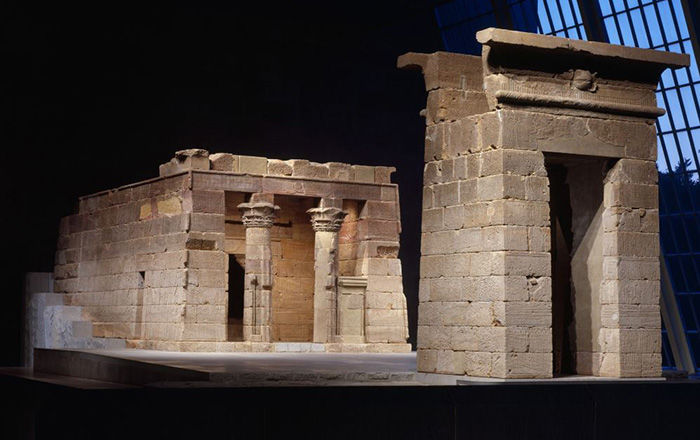Two Princesses
New Kingdom, Amarna Period
Not on view
The original of this facsimile is part of the preserved lower part of a wall scene (now in the Ashmolean Museum) excavated in what Petrie called the 'King's House' after the subject matter of the paintings. This finely decorated building has recently been suggested to be a vizier's formal office. The building is located in the Central City at Amarna, linked to the ceremonial Great Palace by a bridge constructed across the Royal Road.
This scene derives from an informal grouping of the royal family that extended over a wall in one room of the building; apparently there was a mirroring scene on the opposite wall, and other royal scenes on the remaining walls. Only the lower part of the mural composition is preserved, but that part gives evidence that the king was seated on a chair with his feet on a cushion, and that the queen crouched among cushions across from him. Three princesses stood between them, and two younger princesses sat on smaller cushions beside their mother. These two younger princesses appear in this facsimile beside Nefertiti's large figure with her heel drawn up against her buttocks. She is clad in white with a red pleated sash that flows down between her two daughters. The small children have many bead necklaces and bracelets, and large earrings with pendant bead strings. One draws the face of the second toward her. The painting is very fine: for example, a white underlayer is used to brighten specific tones, the rare pigment orpiment provides bright yellows, and shading intimates the roundness of figures.
Scenes of the royal family as an intimate, affectionate circle reprsent the aura of blessedness bestowed on Akhenaten by the Aton. Such representations are iconic in the set of scenes central to the Aten religion, and, in fact, appear in temple relief.
This image cannot be enlarged, viewed at full screen, or downloaded.

